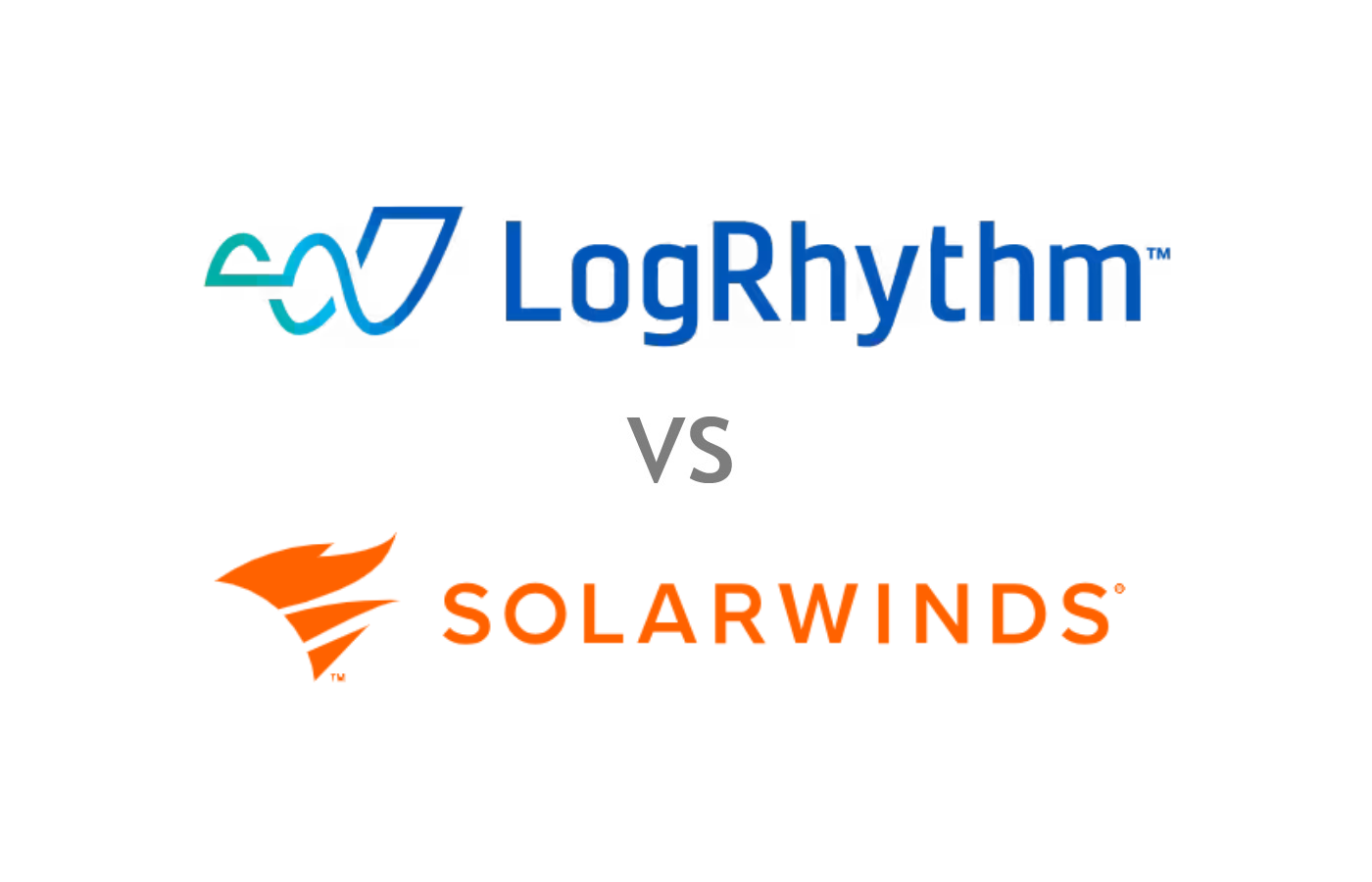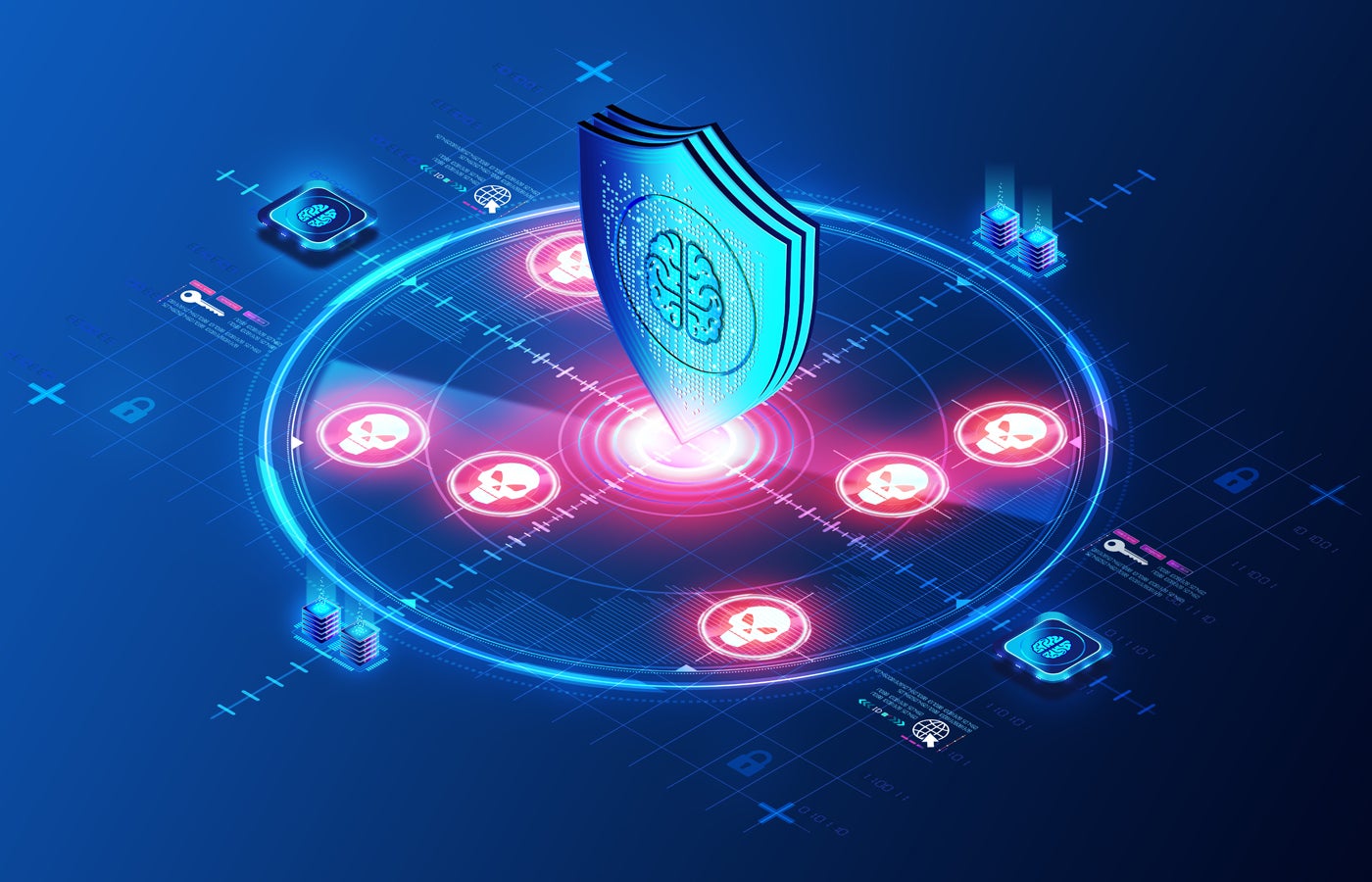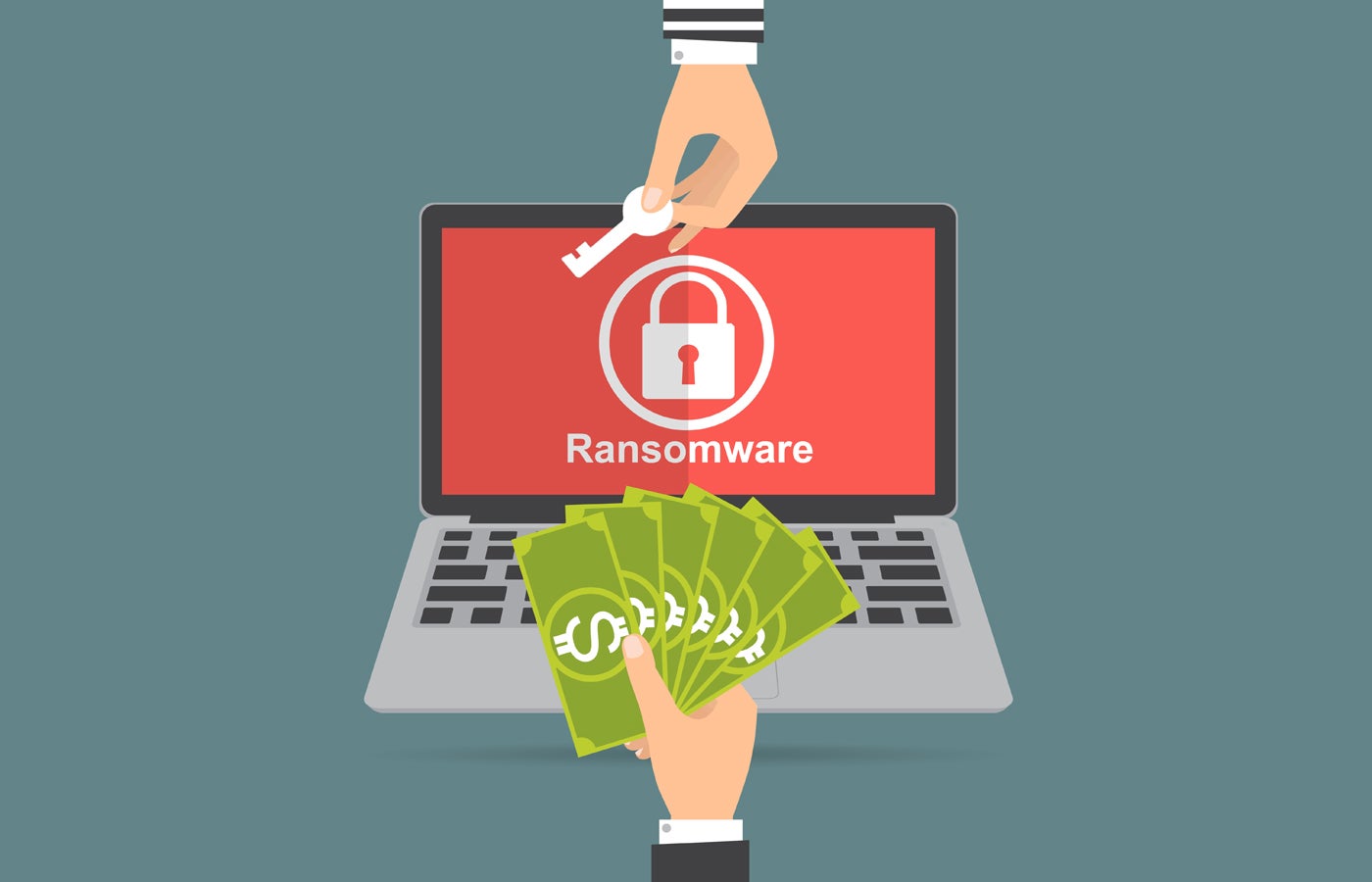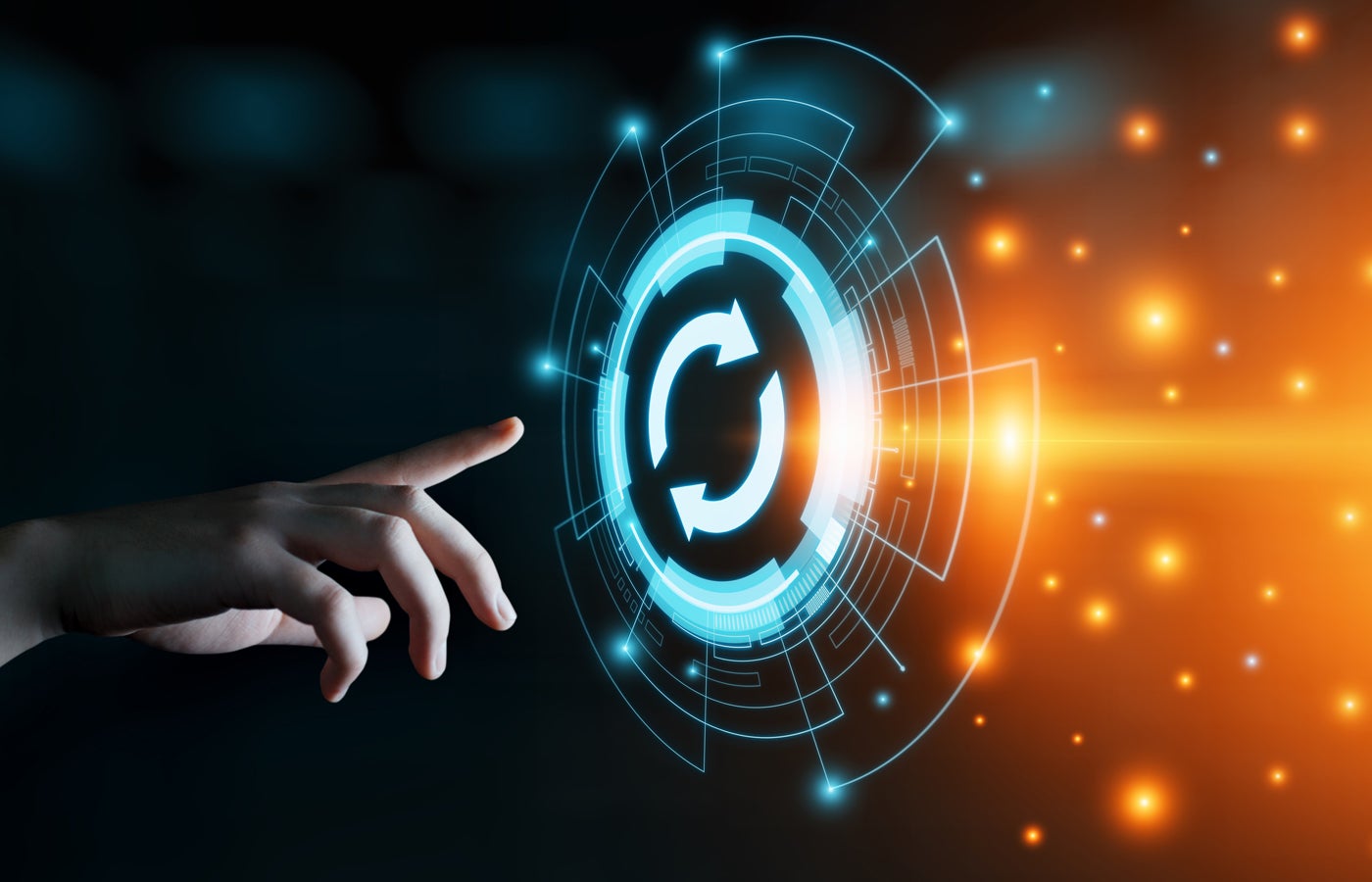LogRhythm NextGen SIEM and SolarWinds Security Events Manager provide security information and event management tools to users who wish to ensure their organizational networks’ security and digital devices’ security. While both products provide SIEM capabilities, based on my analysis, I believe that each platform is optimized for different audiences:
- LogRhythm: Best for mature companies with deep security needs and a dedicated security operations center team.
- SolarWinds: Best for smaller teams or those looking for ease of reporting.
LogRhythm vs SolarWinds: Comparison table
| Features | ||
|---|---|---|
| Pricing | ||
| Free trial | ||
| Real-time monitoring | ||
| Logging | ||
| Analytics | ||
| Reporting | ||
| Threat management | ||
| Incident response | ||
| Customization | ||
Pricing
LogRhythm
LogRhythm offers perpetual licensing and subscription-based pricing plans, but the company doesn’t publicly disclose pricing information. I found the lack of pricing information disappointing, especially since LogRhythm doesn’t offer a free trial either. The licensing allows unlimited users and log sources, and can be run via the cloud, hardware, and virtual machines. To get an exact quote on pricing, contact LogRhythm.
For more information, check out our LogRhythm vs Splunk comparison and our guide to adopting Splunk’s SIEM platform.
SEE: Everything You Need to Know about the Malvertising Cybersecurity Threat (TechRepublic Premium)
SolarWinds
SolarWinds price starts at $2,992, with an option to get a custom pricing plan. Users can choose from the perpetual licensing option, which allows for indefinite license use, or the subscription-based model. While the cost of subscription-based licensing is initially far less than the cost of purchasing the perpetual license, the long-term cost is higher. A 30-day free trial is available from SolarWinds, which stood out to me since LogRhythm does not offer a free trial.
LogRhythm vs SolarWinds: Feature comparison
Threat monitoring
LogRhythm monitors the data and events of organizations to detect anomalies throughout their networks and endpoints. The system collects security data, log data, and flow data to provide holistic real-time visibility and effective threat detection. The risk-based monitoring eliminates blind spots and identifies threats quickly, so users can respond to them before they cause severe damage.
LogRhythm’s Endpoint Threat Detection Module uses threat intelligence, machine learning, and behavior analytics to find potential threats. I also appreciated that LogRhythm SIEM features multiple methods for threat detection, including identifying abnormal communication patterns, lateral movement, and changes to sensitive files.
The SolarWinds SIEM solution provides continuous threat detection and real-time monitoring across users’ devices, services, files, and folders with its on-premises and multicloud deployments. Its intuitive dashboard and user interface make navigating the tool’s features easy for users. The centralized repository collects log data with the SIEM log collector tool, and raw network log data is organized and normalized for users in the system.
This is one of the main reasons we named it the best choice for log aggregation on our list of the best SIEM tools. Additionally, I appreciate that SolarWinds features event-time correlation and advanced search capabilities, which are beneficial when conducting forensic analysis and security investigation.
Threat analytics
The LogRhythm NextGen SIEM platform uses multidimensional analytics to detect and stop security threats. Data collected by the system is normalized and correlated to identify potentially dangerous activity, which provides more accuracy. I also liked that network traffic and packet data are analyzed for patterns and behavioral outliers.
The behavioral analysis features can process users’ activity within a network and identify deviations from normal baseline behavior; this is made possible through machine learning and can help ensure security from insider access abuse and data exfiltration. Additionally, the system allows for both contextual and unstructured searches.
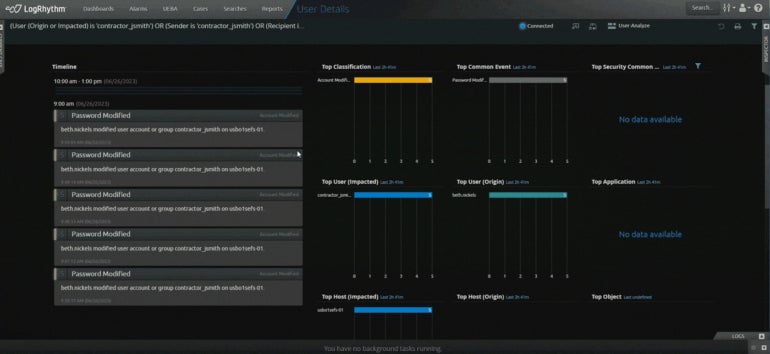
SolarWinds SIEM processes data and events for signs of security threats. The event log analyzer collects and analyzes log data, providing users insight with real-time visibility and context. Events are monitored to identify suspicious activity, such as permission changes and data modification. This data is then correlated through built-in and custom event correlation rules.
I appreciate the automated insights offered by these SolarWinds features, which can be beneficial in helping users and network administrators diagnose system vulnerabilities, troubleshoot network problems, and improve their resource management.
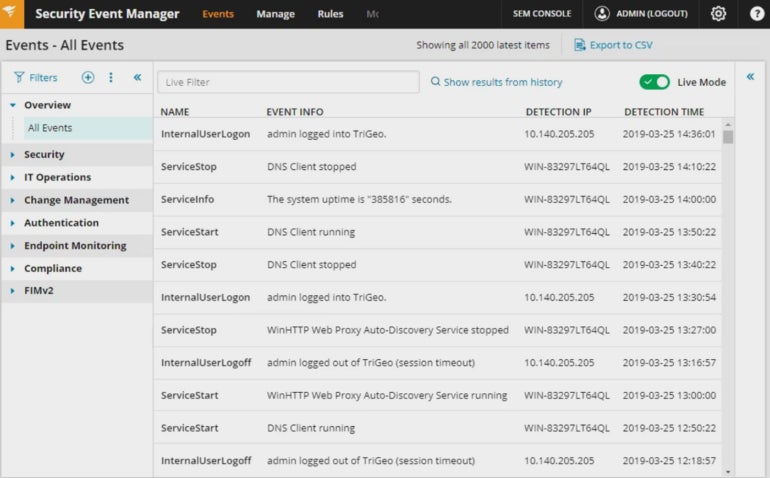
Notifications
When a threat is detected, the LogRhythm SIEM platform notifies its users based on their settings and the event’s severity. The Alarming and Response Manager can notify users when threats are detected or alert them of suspicious activity. The LogRhythm DetectX solution uses analytics to determine the prioritization of threats based on their severity level.
I also liked that the security analytics can be customized, or entirely developed by users, so that no notifications slip through the cracks. In addition, users can integrate their tools with open-source or STIX/TAXII-compliant providers for even more alert precision.
SolarWinds lets users set custom alerts or view SEM alert feeds, so they are always aware of security threats. Users can manage their systems to provide threshold-based alarms and notifications for security system event stream triggers, system errors, IDS/IPS systems with infection symptoms, crash reports, etc.
I was also glad to see that its fine-tuned file integrity monitoring filters can be adjusted to ensure that only high-priority, file-related events create reports. When security events occur, or threats are identified, SolarWinds Log & Event Manager can send users notifications via email.
Automation and response
LogRhythm SIEM monitors organizational data and events for suspicious activity and takes actions to minimize the impact with its automated response features. Its embedded solution, RespondX, can coordinate these response actions into repeatable processes to manage events quickly and efficiently.
I also liked that the tool has preconfigured modules and reports, which means that users have complete visibility into threats and concerns and never have to hunt down the information they need to respond appropriately. Additionally, the platform offers playbooks for streamlining operational workflows.
Once the SolarWinds SIEM tool identifies security incidents and threats that require action, it can respond in various ways. Users can set customized responses to flagged security events or suspicious activity through automation. This can include blocking or quarantining infected devices, killing processes, restarting servers, logging off users, and even disabling an agent’s access to the network. I like to see these automatic responses, because it means you don’t have to rely on your IT team manually addressing every single suspicious incident.
In addition, I appreciate that Active Response lets users mitigate risks with either customizable or preconfigured settings for a more hands-off experience. Users can also set their notification options to be alerted to significant events.
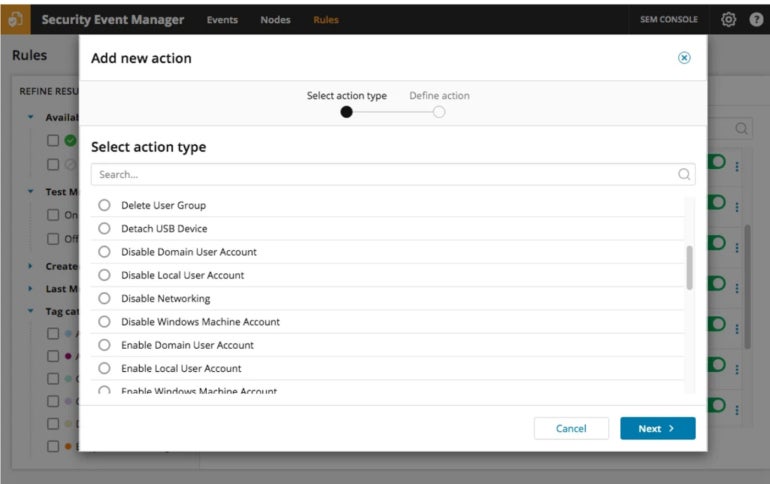
LogRhythm pros and cons
Pros
- Allows users to match their security and IT operations with established security frameworks such as MITRE ATT&CK and NIST.
- Simplifies the process of collecting and analyzing data from various sources through a centralized log management system.
- Offers User and Entity Behavior Analytics capabilities.
- Can automate repetitive tasks with its embedded security orchestration, automation, and response capabilities.
- Supplements traditional log collection with endpoint monitoring.
- Uses Machine Data Intelligence capability to help users to contextualize and simplify complex data.
Cons
- Pricing information isn’t publicly available.
- The customization options might be narrow when compared to other tools.
- No free trial offered.
SolarWinds pros and cons
Pros
- Supports compliance reporting and audits for HIPAA, PCI DSS, SOX, and more.
- Licensing cost is based on the number of log-emitting sources, not the log volume.
- Allows users to customize actions based on threat intelligence findings.
- Can send generated raw event log data in different formats such as CSV or by using syslog protocols.
- Offers a 30-day free trial.
Cons
- Limited AI and machine learning-enhanced capabilities.
- Limited information on pricing.
Should your organization use LogRhythm or SolarWinds?
In my opinion, LogRhythm offers a more robust SIEM solution with its advanced AI and machine learning-backed threat detection and response capabilities. The solution makes threat detection workflows easier as its SOAR feature is integrated into the dashboard. I recommend LogRhythm if your organization has complex security needs and operates a dedicated SOC team.
On the other hand, SolarWinds offers a more basic and user-friendly interface design. Although it can help you monitor and manage security events effectively and generate compliance reports, it might lack some of the advanced features and customization options found in LogRhythm. For that reason, I think that SolarWinds is a better choice for smaller organizations looking for a simple SIEM tool that is more user-friendly.
If you want more general guidance for choosing the right SIEM tool, see our SIEM buyer’s guide. And if you want clarity on what SIEM tools can and can’t do to protect your business, check out our article explaining the six SIEM myths.
Methodology
I compared both SIEM solutions for this SolarWinds vs. LogRhythm review by consulting product documentation, demo videos, and user feedback from reputable review sites such as Gartner Peer Insights. I considered features such as threat monitoring, threat analytics, notification settings, automation tools, and incident response tools. I also weighed other factors such as pricing, licensing options, customer support, user interface design, and LogRhythm SIEM integrations vs. SolarWinds integrations.

